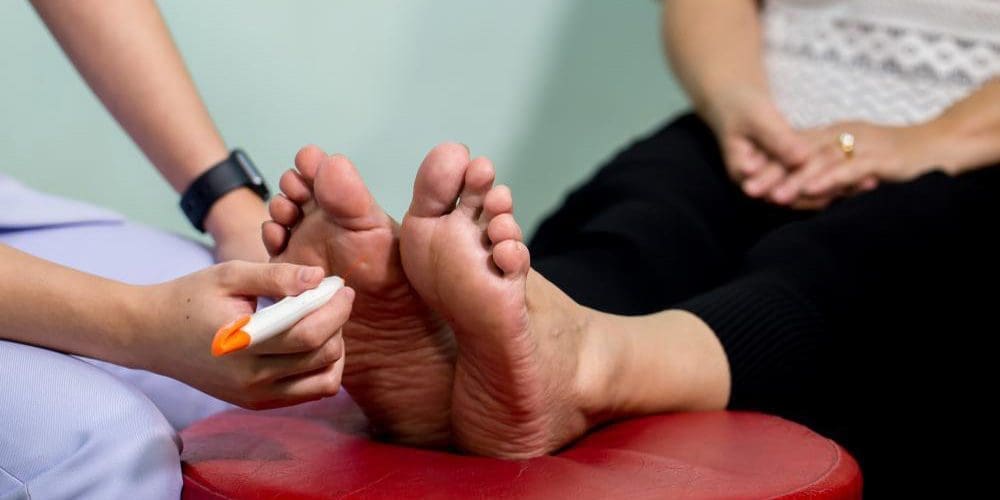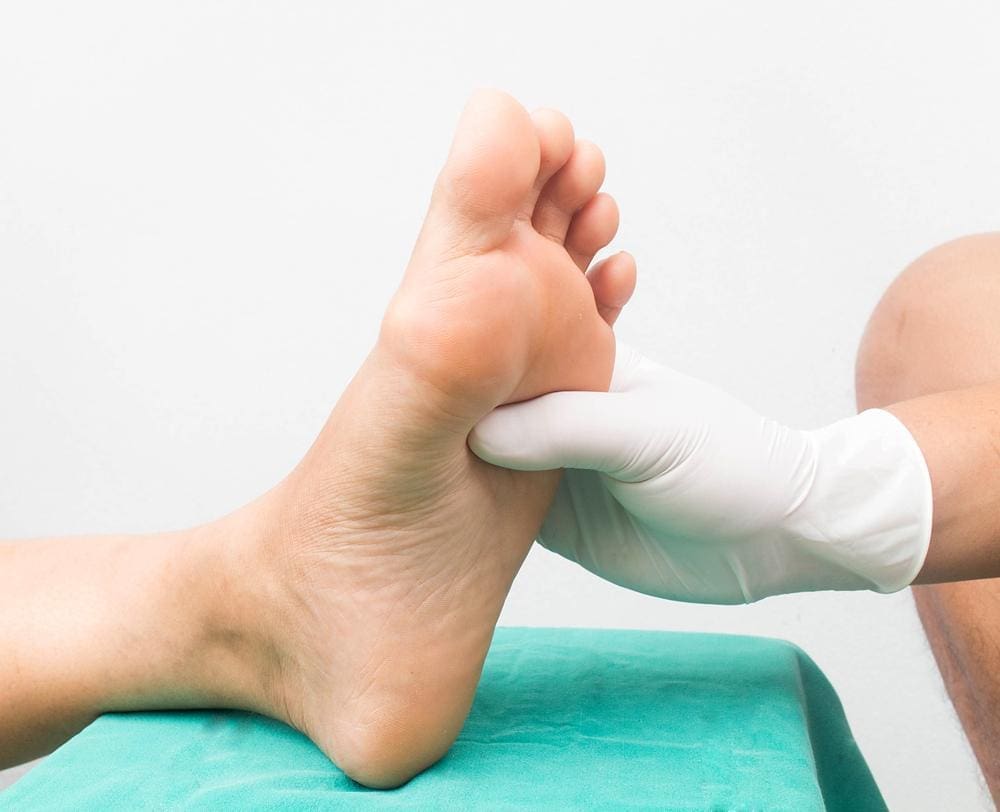
Nerve damage is a common complication among people with diabetes. When someone with diabetes develops nerve damage as a result of the disease, it’s called diabetic neuropathy. It’s possible to have just one type of diabetic neuropathy or multiple types. Most of the time, the condition develops gradually over time as the body becomes more damaged from high blood glucose levels. For many, no symptoms or problems are noticed until after a lot of damage has occurred.
Thankfully, there are things you can do to prevent diabetic neuropathy from developing. Should it develop, treatments are available to help you manage neuropathic pain and discomfort. Chiropractic treatment is one of the most effective tools available for managing diabetic neuropathy and other complications of diabetes.
There are several tools available to help people living with diabetic nerve pain. Some of the most commonly used tools include:

There are four types of diabetic neuropathy, including:
This is the most common type of diabetic neuropathy that first affects the feet and legs and then the hands and arms. Symptoms include:
Diabetes affects the autonomic nervous system. The autonomic nervous system controls the digestive system, blood pressure, heart rate, sweat glands, and more. Symptoms of diabetic autonomic neuropathy include:
Proximal neuropathy affects thigh, hip, buttock, and leg nerves. Symptoms usually only occur on one side of the body and include:
Symptoms might improve over six months to a year.
Mononeuropathy affects a single, specific nerve, usually in the face, torso, leg, or arm. Symptoms depend on the nerve involved and include:
Symptoms tend to reduce or disappear over a few weeks or months.
Chiropractic care can be beneficial for improving nerve function for a diabetic patient. This applies to nerve damage caused by diabetes, infections, autoimmune diseases, and other issues. Chiropractic treatment helps improve nerve damage by promoting the body’s natural healing response.

Chiropractic treatments aim to remove issues that interfere with communicating messages sent from the brain and the spinal cord to the rest of the body.
Some of the most common chiropractic techniques used to treat neuropathy in diabetic patients include:
This type of therapy is most commonly used for treating neuropathy. It utilizes a medical device that emits colorful wavelengths of energy into the body’s muscles, nerves, and ligaments. Cold laser therapy stimulates blood flow and increases the nutrients and oxygen at targeted points in the body—successful cold laser therapy results in the repair of nerve fibers.
Ultrasound is an imaging technique that uses sound waves to help the body build healthy tissue. It’s painless, non-invasive, and can help with neuropathy and other medical conditions.
These are two of the most common treatment approaches used by chiropractors—adjustments correct issues in the spine to relieve pain and create alignment. Misalignment in the spine interferes with nerve signals traveling down the spine. Manipulations and adjustments allow the muscles to relax and stretch, relieving body tension.
Chiropractic care is highly beneficial for improving the condition of the nervous system. It helps to reduce inflammation, which allows neuropathy pain to ease gradually. It’s one of the best alternatives to more invasive diabetes treatment, including medication.

Chiropractic manipulation and adjustment help manage symptoms, including loss of sensation and the tingling sensations and pain that are so common in neuropathy.
Often, mild cases of neuropathy can be improved with just a single chiropractic adjustment. It’s also helpful to treat neuropathy and diabetes on an ongoing basis with regular chiropractic care. Chiropractors target the main cause of neuropathy and offer in-office and at-home exercises and lifestyle changes to help people better manage their disease.

© Accident Care Chiropractic | Hablamos Español
Located in: North Portland, NE Portland, SE Portland, Gresham, Clackamas, Oregon City, Hillsboro, Bethany, Beaverton, Tigard, Forest Grove, Woodburn,
McMinnville, Keizer, Salem, South Salem, Bend, Springfield, Vancouver, Hazel Dell, East Vancouver, Pasco, Kennewick, Lakewood.
We Specialize in Car Accident Treatment & Recovery
Home | About Us | Testimonials | Blog | Sitemap | Privacy Policy | Services | Locations | Contact Us